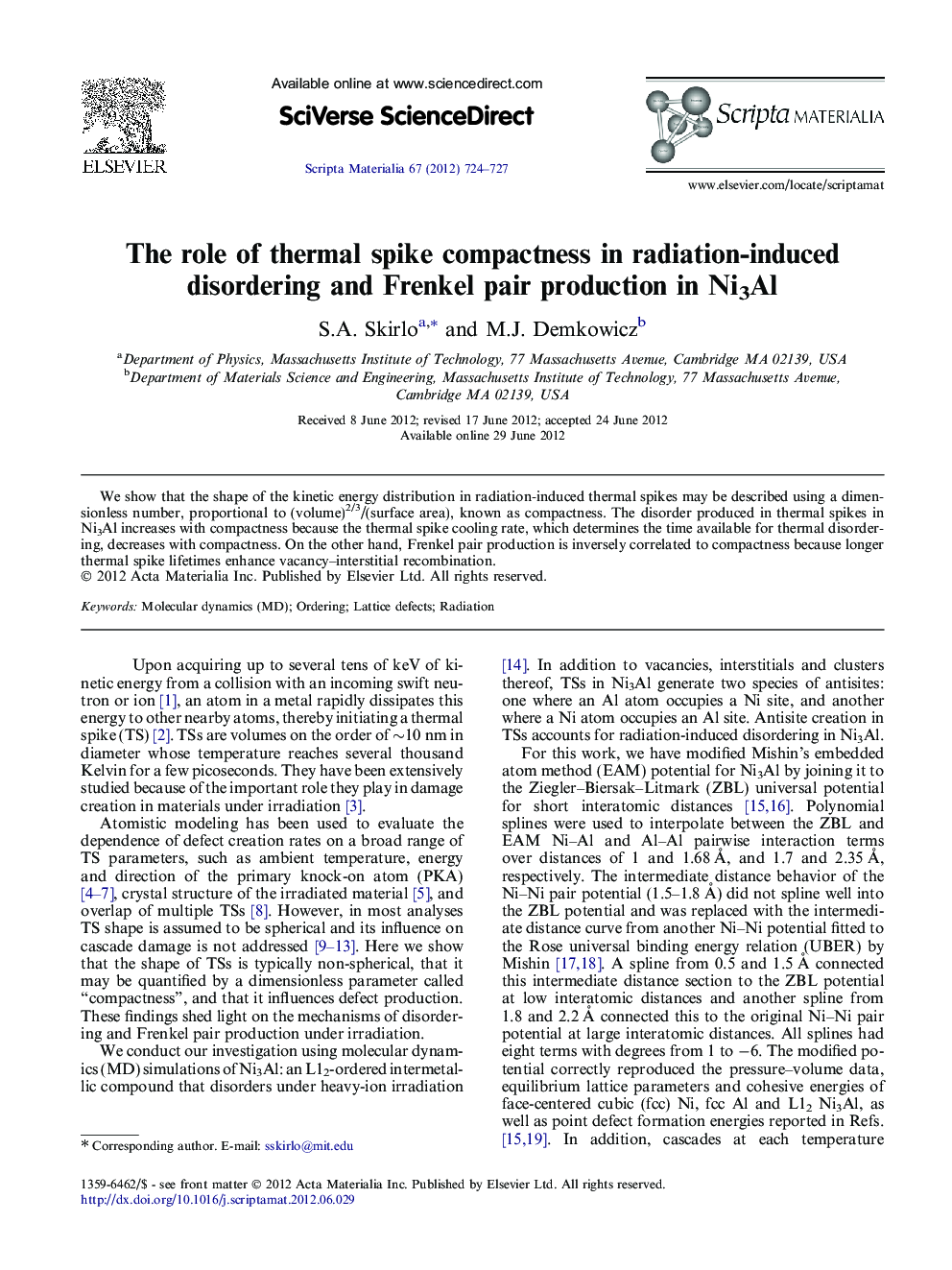| Article ID | Journal | Published Year | Pages | File Type |
|---|---|---|---|---|
| 1498906 | Scripta Materialia | 2012 | 4 Pages |
Abstract
We show that the shape of the kinetic energy distribution in radiation-induced thermal spikes may be described using a dimensionless number, proportional to (volume)2/3/(surface area), known as compactness. The disorder produced in thermal spikes in Ni3Al increases with compactness because the thermal spike cooling rate, which determines the time available for thermal disordering, decreases with compactness. On the other hand, Frenkel pair production is inversely correlated to compactness because longer thermal spike lifetimes enhance vacancy–interstitial recombination.
Related Topics
Physical Sciences and Engineering
Materials Science
Ceramics and Composites
Authors
S.A. Skirlo, M.J. Demkowicz,
